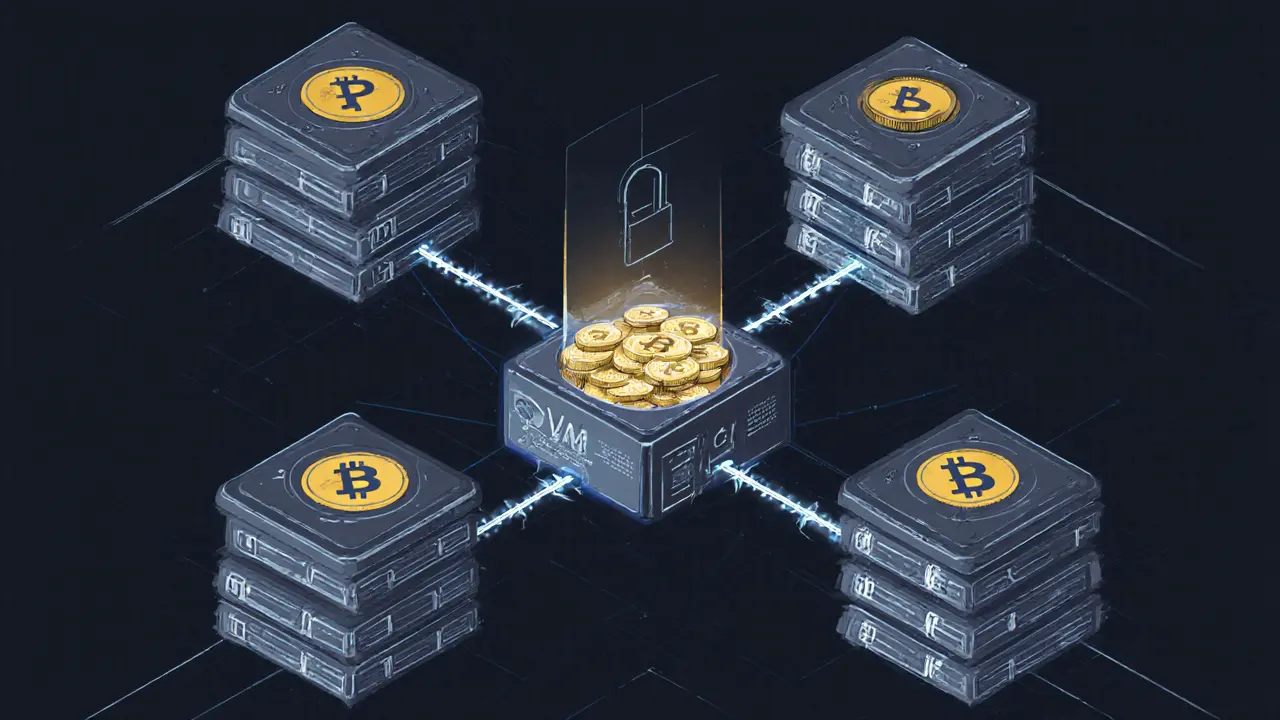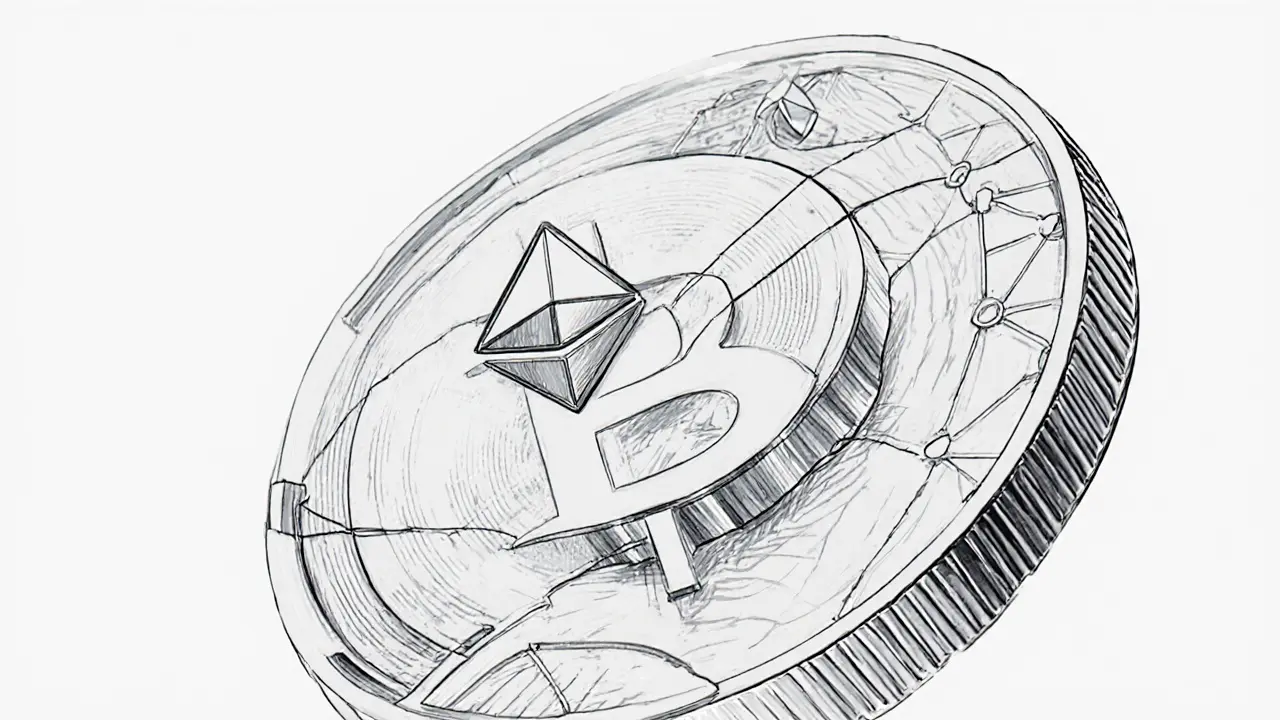renBTC Calculator
Total RenBTC Minted: 0 renBTC
Total Cost: $0.00
Estimated Yield: $0.00
Net Profit/Loss: $0.00
Profit Margin: 0%
Break-even Point: $0.00
Decentralized Security
Powered by RenVM and Darknodes, ensuring trustless custody.
DeFi Integration
Use renBTC in lending, yield farming, and DEXs for passive income.
1:1 Redemption
Burn renBTC anytime to redeem 1:1 for original Bitcoin.
Ever wondered how you can use your Bitcoin in the booming world of decentralized finance without actually selling it? That's exactly what renBTC lets you do - it brings Bitcoin onto Ethereum as an ERC‑20 token, opening the door to lending, trading, and yield‑earning opportunities that the native Bitcoin chain simply can't support.
What is renBTC?
When you first hear the name, you might think it’s just another Bitcoin fork. In reality, renBTC is a 1:1 backed ERC‑20 token that represents Bitcoin on the Ethereum network. Each renBTC token can be redeemed for exactly one Bitcoin at any time, so there’s no hidden peg or synthetic pricing.
How renBTC Works: Minting and Redemption
The process starts on Bitcoin’s blockchain. You send BTC to a special address managed by the RenVM bridge. Once those coins are locked, the bridge mints an equivalent amount of renBTC on Ethereum and sends it to your Ethereum‑compatible wallet. To get your original Bitcoin back, you simply burn the renBTC tokens, triggering the release of the locked BTC to the address you specify.
Technical Architecture Behind the Token
The magic happens inside RenVM, a decentralized virtual machine that runs a network of Darknodes. Each Darknode operator must stake exactly 100,000 REN tokens, creating a financial disincentive for bad actors. The staked REN not only secures the network but also earns a share of the fees collected every time someone mints or redeems renBTC.
Because custody is distributed across many independent nodes, there’s no single point of failure. This contrasts sharply with centralized bridges that keep all locked BTC in one custodial wallet.
Using renBTC in DeFi
Once you have renBTC in an Ethereum wallet, it behaves just like any other ERC‑20 token. That means you can:
- Supply it to decentralized exchanges (DEXs) like Uniswap or SushiSwap and earn trading fees.
- Deposit it into lending platforms such as Aave or Compound to collect interest while still holding Bitcoin exposure.
- Stake it in prediction markets or automated yield farms that accept ERC‑20 assets.

Advantages Over Other Wrapped Bitcoin Solutions
There are a few big names in the wrapped Bitcoin space: WBTC (centralized), pBTC (synthetic), and renBTC (decentralized). Here’s a quick side‑by‑side look:
| Feature | renBTC | WBTC | pBTC |
|---|---|---|---|
| Custody Model | Decentralized Darknode network | Centralized custodian (BitGo) | Synthetic, backed by collateral |
| Redemption Guarantee | 1:1 on‑chain redemption | 1:1, but relies on custodian | Price‑tracked, not actual BTC |
| Supported Chains | Ethereum (ERC‑20) + other EVM chains | Ethereum, BSC, Polygon | Ethereum only |
| Fees | Bitcoin network + Ethereum gas + small bridge fee | Custodian fee + gas | Higher due to synthetic mechanics |
renBTC’s trustless custody and true 1:1 backing give it a security edge, while its multi‑chain roadmap promises broader DeFi integration.
Risks, Fees, and Things to Watch
Nothing is free. When you mint renBTC you’ll pay:
- Bitcoin transaction fees for the initial lock‑up (usually a few dollars).
- Ethereum gas fees for the mint transaction (can spike during network congestion).
- A small RenBridge service fee, currently around 0.1% of the amount.
- Smart contract risk: If the RenBridge contracts were compromised, funds could be lost. Audits have been performed, but no code is 100% immune.
- Darknode security: The network’s safety relies on sufficient REN staking and honest operators. A massive, coordinated attack could jeopardize custody.
- Liquidity risk: While most major DEXs list renBTC, the depth might be lower than WBTC, leading to slippage on large trades.
Step‑By‑Step: Getting Started with renBTC
- Make sure you have Bitcoin in a wallet you control.
- Set up an Ethereum‑compatible wallet (MetaMask, Trust Wallet, etc.) and fund it with some ETH for gas.
- Visit the official RenBridge dApp.
- Select “Bitcoin → renBTC”, paste your Bitcoin address, and the amount you want to wrap.
- Confirm the Bitcoin transaction. Wait for the required confirmations (typically 3‑6 blocks).After the BTC lock is detected, the bridge will mint the same amount of renBTC to your Ethereum address.
- Now you can connect your wallet to any DeFi protocol that accepts ERC‑20 tokens.
- To reverse the process, go back to RenBridge, choose “renBTC → Bitcoin”, burn the tokens, and provide a Bitcoin address for the release.
Remember to double‑check contract addresses and only use the official bridge site to avoid phishing scams.
Future Outlook for renBTC
As DeFi keeps expanding, the demand for Bitcoin liquidity on Ethereum is only growing. Ren’s roadmap includes support for additional EVM‑compatible chains like Optimism and Arbitrum, meaning renBTC could soon be usable on multiple Layer‑2 solutions with lower gas costs. The ongoing incentive model-where Darknode operators earn fees in the converted asset-helps keep the network secure as usage scales.
Analysts agree that renBTC’s success is tied to two factors: the overall health of the Ethereum DeFi ecosystem and the continued robustness of the RenVM architecture. If either falters, the token could see reduced adoption, but the decentralized nature of the bridge gives it a resilience edge over custodial rivals.
Frequently Asked Questions
What does it mean that renBTC is 1:1 backed?
Every renBTC token is minted only after an equal amount of Bitcoin is locked in the RenVM network. You can always burn the token to retrieve the exact BTC you originally deposited.
How are the locked bitcoins stored?
The BTC is not kept in a single wallet. It is distributed across a network of Darknodes, each of which holds a slice of the total custodial pool. This decentralization reduces the risk of a single point of failure.
Do I need to hold REN tokens to use renBTC?
No. REN is only required if you want to run a Darknode and earn a share of bridge fees. Regular users can mint and redeem renBTC without owning any REN.
Is renBTC safe for large transactions?
The bridge has been handling multi‑million‑dollar swaps since its launch, but you should always verify network status, check gas prices, and consider splitting huge amounts into smaller batches to mitigate any unexpected delays.
Can I use renBTC on Layer‑2 solutions?
Yes. renBTC can be bridged to Optimism, Arbitrum, and other EVM‑compatible Layer‑2s via existing bridge adapters, allowing you to enjoy lower gas fees while still accessing DeFi protocols.

